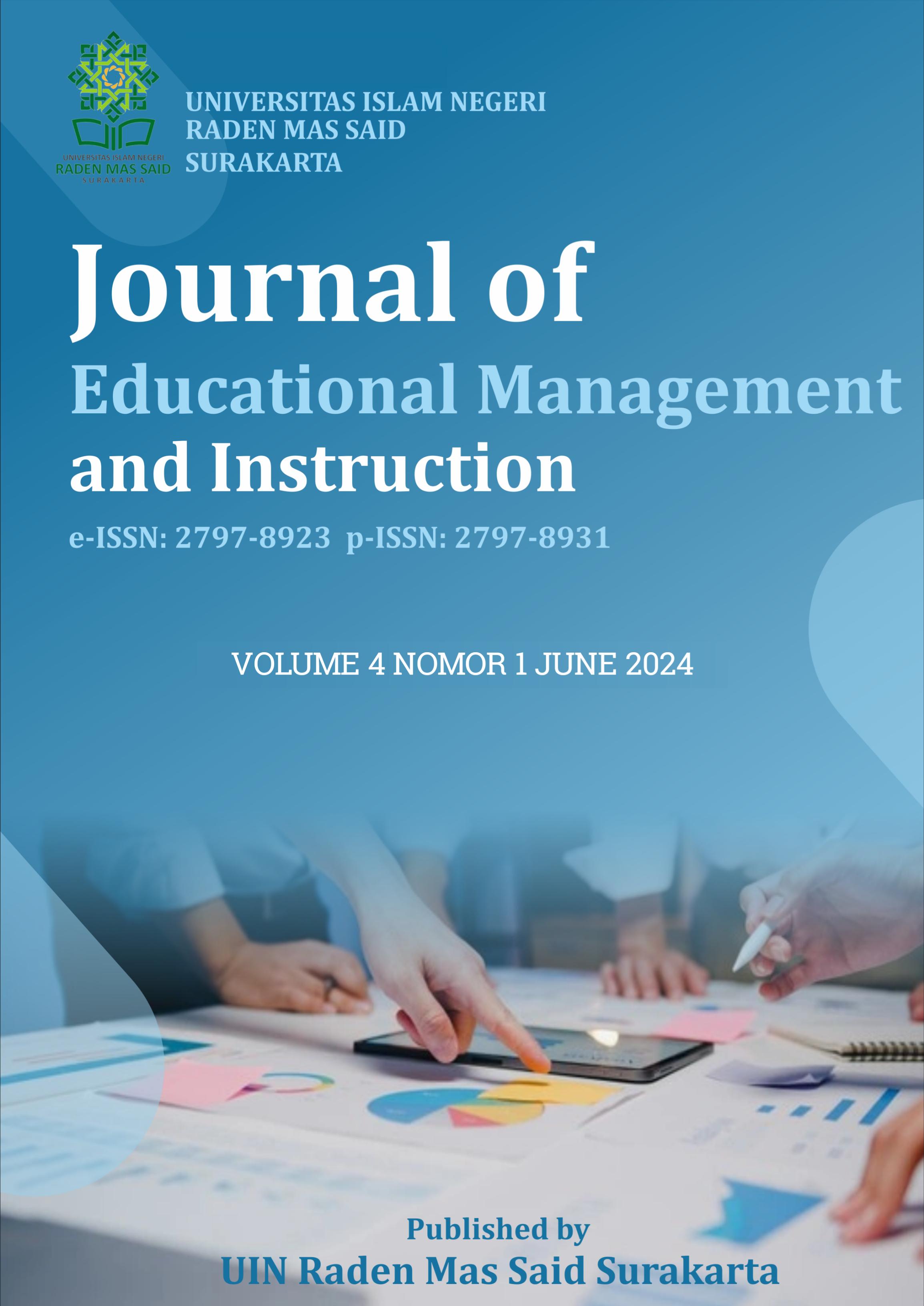Characterization of higher education spatial injustices: Cases of selected Sub-Saharan universities
DOI:
https://doi.org/10.22515/jemin.v4i1.8712Keywords:
Higher Education, spatial justice, social justice, Sub-Saharan universitiesAbstract
The primary focus of this study was to explore the experiences of academics in relation to the challenges they face regarding office space. This paper was underpinned by the qualitative exploratory research design within the interpretivist philosophy. This paper explores the varied expressions of participants (three lecturers, two senior lecturers, three associate professors, four full professors, and three managers) through semi-structured interviews on how they characterize spatial challenges in their selected universities. In its examination, I undergirded the thesis of this paper on the social justice theory and on the concept of space as espoused by Lefebre (2004). In addition, extant literature on the epistemology of academic space and academic performance was intensively evaluated. The result of this study provides a glimpse of the socially just challenges academics face regarding office space. This study is of significance because there is scarcity of research on the comparison of office space provision in relation to selected universities in the Sub-Saharan region. In addressing this scholarly gap, the paper provides insights in the epistemology of space, social justice, and academic performance and how space can disrupt the academic agenda.
Downloads
References
Bawa, A. (2018). Re-imagining the social purpose of universities through engagement. Higher education for diversity, social inclusion and community A democratic imperative, https://usaf.ac.za/re-imagining-the-social-purpose-of-universities-through-engagement/
Blandford, A., Furniss, D. & Makri, S. (2016). Qualitative HCI Research: Going Behind the Scenes. Synthesis Lectures on Human-Centered Informatics, 9(1):1-115. https://doi.org/10.1007/978-3-031-02217-3
Chakraborty, A., Kumar, S., Shashidhara, L. S., & Taneja, A. (2021). Building sustainable societies through purpose-driven universities: a case study from Ashoka University (India). Sustainability, 13(13), 7423. https://doi.org/10.3390/su13137423
Chikafalimani, S.H.P., Kibwami, N. & Moyo, S. (2021). Management of facilities at public universities in Africa: current challenges and the way forward. Real Estate Management and Valuation, 29(1), 21-29. https://doi.org/10.3390/su13137423Dahl
Entrikin, J. N., & Entrikin, J. N. (1991). The betweenness of place, Macmillan Education UK. DOI. https://doi.org/10.56021/9780801840838.
Fraser, N. (Ed). (1978). Social justice in the age of identity politics: Redistribution, recognition, and participation. Routledge. https://ideas.repec.org/p/zbw/wzboem/fsi98108.html
Fraser, N. (Ed). (2020). From redistribution to recognition? Dilemmas of justice in a'postsocialist'age. Routledge. https://newleftreview.org/issues/i212/articles/nancy-fraser-from-redistribution-to-recognition-dilemmas-of-justice-in-a-post-socialist-age
Gallagher, W. (1993). The power of place: How our surroundings shape our thoughts, emotions, and actions. New York: Poseidon. https://books.google.co.id/books/about/The_Power_of_Place.html?id=Cw5HAAAAMAAJ&redir_esc=y
Guba, E.Y.L., & Lincoln, Y.S. (1994). Competing paradigms in qualitative research. Handbook of qualitative research. Thousand Oaks: SAGE. https://www.scirp.org/reference/ReferencesPapers?ReferenceID=574417
Hawthorne, C. (2019). Black matters are spatial matters: Black geographies for the twenty‐first century. Geography Compass, 13(11), 1-13, https://doi.org/10.1111/gec3.12468
Hopland, A. O., & Kvamsdal, S. (2020). Academics’ preferences for office spaces. Facilities, 39(5), 350-365. https://doi.org/10.1108/F-02-2019-0029
Lefebvre, C. (1991). Take serial verb constructions in Fon. Serial verbs: Grammatical, comparative and cognitive approaches. 37-78. https://doi.org/10.1075/ssls.8.03lef
Lune, H. & Berg, B.L. (2017). Qualitative Research Methods for the Social Sciences. 9th edition. London: Pearson Education. https://books.google.co.id/books/about/Qualitative_Research_Methods_for_the_Soc.html?id=6E_gjwEACAAJ&redir_esc=y
Madikizela-Madiya, N. (2021). The question of access and spatial justice in universities in sub-Saharan Africa: A capabilities approach. Transformation in Higher Education, 6, 124. https:// doi.org/10.4102/the. v6i0.124
Madikizela-Madiya, N., & Atwebembeire, J. M. (2021). “Colleague postgraduate supervision” and the production of space in higher education: a duoethnographic analysis. Qualitative Research Journal, 21(2), 166-176. https://doi.org/10.1108/QRJ-05-2020-0039
MacDonald, K., Diamond, F., Wilkinson, J., Sum, N., Longmuir, F., & Kaukko, M. (2022). Creating spaces of learning in academia: fostering niches for professional learning practice. Studies in Continuing Education, 44(2), 266-283. https://doi.org/10.1080/0158037X.2021.1956890
Mahlangu, V. P. (2022). Exploring the constraints of space in enhancing giftedness of academics and administrative staff in higher education. Journal for the Education of Gifted Young Scientists, 10(1), 11-22. Https://doi.org/ 10.17478/jegys.1021197
Marshall, C., & Rossman, G. B. (2014). Designing qualitative research. Sage publications. https://us.sagepub.com/en-us/nam/designing-qualitative-research/book274291
McElroy, J. C., and P. C. Morrow. (2010). “Employee Reactions to Office Redesign: A Naturally Occurring Quasi-Field Experiment in a Multi-Generational Setting.” Human Relations 63 (5): 609–636. https://doi.org/10.1177/0018726709342932
Mohamedbhai, G. (2014). Massification in higher education institutions in Africa: Causes, consequences and responses. International Journal of African Higher Education, 1(1). https://doi.org/10.6017/ijahe.v1i1.5644
Mok, K. H., & Jiang, J. (2017). Massification of higher education: Challenges for admissions and graduate employment in China. Managing international connectivity, diversity of learning and changing labor markets: East Asian perspectives, 219-243. https://doi.org/10.1007/978-981-10-1736-0_13
Monama, S. A., Mokoele, N. J., & Mokgotho, K. D. (2022). South African spatial planning fragmentation: repealing the apartheid planning imprint. International Journal of Entrepreneurship, 26,1-11. https://www.proquest.com/openview/4ee12fcac391e99f58f0c3f6af31a689/1?pq-origsite=gscholar&cbl=29727
Ndlovu-Gatsheni, S. J. (2017). The emergence and trajectories of struggles for an African university': The unfinished business of African epistemic decolonization. Kronos, 43(1), 51-77. http://dx.doi.org/10.17159/2309-9585/2017/v43a4
Patton, M. Q. (2015). Qualitative research and evaluation methods. (3rd ed). Sage. Qualitative research & evaluation methods
Polit, D.F. & Beck, C.T. (2017). Nursing Research: Generating and Assessing Evidence for Nursing Practice. (10th ed). Wolters Kluwer Press. https://doi.org/10.1016/j.iccn.2015.01.005
Oluwunmi, A. O., & Gbarayeghe, N. V. (2022). Influence of office layout on academic staff performance in Covenant University, Ota. Environmental Technology and Science Journal, 13(1), 98-109. https://dx.doi.org/10.4314/etsj.v13i.8
Silverman, D. (ed). (2020). Qualitative research. SAGE. https://books.google.co.id/books/about/Qualitative_Research.html?id=7RwJEAAAQBAJ&redir_esc=y
Sileyew, K.J. (2019). Research design and methodology. IntechOpen. DOI:10.5772/intechopen.85731
Soja, E. (2003). Writing the city spatially1. City, 7(3), 269-280. https://doi.org/10.1080/1360481032000157478
Soja, E. W. (Ed). (2008). Taking space personally. Routledge. https://www.taylorfrancis.com/chapters/edit/10.4324/9780203891308-8/taking-space-personally-edward-soja
Soja, E. (2009). The city and spatial justice. Spatial justice, 1(1), 1-5. https://doi.org/10.5749/minnesota/9780816666676.003.0001
Soja, E. W. (2013). Seeking spatial justice (Vol. 16). University of Minnesota Press. 10.1111/j.1467-9663.2011.00655.x
Strange, C. C., & Banning, J. H. (2015). Designing for learning: Creating campus environments for student success. John Wiley & Sons. https://books.google.co.id/books/about/Designing_for_Learning.html?id=wfAwBgAAQBAJ&redir_esc=y
Sultan, M.F., Zafar, M.R. & Anila. (2016). Office Design and its Impact on Productivity: Evidence from Islamic Banks of Karachi. International Journal of Scientific and Research Publications, 6(6), 335-342. http://www.ijsrp.org/research-paper-0616.php?rp=P545491
Temple, P. (2018). Space, place and institutional effectiveness in higher education. Policy Reviews in Higher Education, 2(2), 133-150. https://doi.org/10.1080/23322969.2018.1442243
Trawalter, S., Hoffman, K., & Palmer, L. (2021). Out of place: Socioeconomic status, use of public space, and belonging in higher education. Journal of Personality and Social Psychology, 120(1), 131. https://doi.org/10.1037/pspi0000248.
Toker, U., & Gray, D. O. (2008). Innovation spaces: Workspace planning and innovation in US university research centers. Research Policy, 37(2), 309-329. https://doi.org/10.1016/j.respol.2007.09.006
Troup, F. (1976). Forbidden pastures: Education under apartheid. London: International Defence and Aid Fund. https://doi.org/10.1080/02582473.2011.569349
Vischer, J. C. (2007). The effects of the physical environment on work performance: Towards a model of workspace stress. Stress and Health, 23(3), 175-184. https://doi.org/10.1002/smi.1134
Vitasovich, A., Kiroff, L. and Boon, J. (2016), “The adoption of modern office workspaces by tertiary education institutes: a case study of Unitec”, In The 40th Australasian Universities Building Education Association (AUBEA) Conference, Singhaputtangkul. https://aut.ac.nz.libguides.com/APA7th/conferences
Van Der Voordt, T. J. (2004). Productivity and employee satisfaction in flexible workplaces. Journal of Corporate Real Estate, 6(2), 133-148. https://doi.org/10.1108/14630010410812306
Downloads
Submitted
Accepted
Published
How to Cite
Issue
Section
License
Copyright (c) 2024 Shuti Steph Khumalo

This work is licensed under a Creative Commons Attribution-NonCommercial 4.0 International License.
Copyright
Copyright aims to protect the specific way the article has been written to describe an experiment and the results. Journal of Educational Management and Instruction is committed to its authors to protect and defend their work and their reputation and takes allegations of infringement, plagiarism, ethical disputes, and fraud very seriously. Automotive Experiences is published under the terms of the Attribution-NonCommercial 4.0 International (CC BY-NC 4.0). Authors retain copyright and grant the journal right of first publication (online and print) with the work simultaneously. We use the restrictive license (non-commercial) as follows:
BY (attribution): Users are allowed to share, distribute and redistribute the published article in any medium or format, with an identification of the authors and its initial publication in this journal. Authors are encouraged to post and distribute their articles immediately after publication (e.g., institutional or public repositories, personal websites). Authors are allowed to enter into additional contractual arrangements for the non-exclusive distribution of the published and an acknowledgment of its initial publication in this journal.
NC (non-commercial): Users are not allowed to use the article commercially without the permission of the authors. Authors agree explicitly that the published article is indexed worldwide in databases, repositories and indexation services, even if these services operate on a commercial basis. Authors grant Journal of Educational Management and Instruction explicit the right to include the published articles in databases, repositories and indexation services.
License
License to Publish
The non-commercial use of the article will be governed by the Attribution-NonCommercial 4.0 International (CC BY-NC 4.0). The author hereby grants Journal of Educational Management and Instruction an exclusive publishing and distribution license in the manuscript include tables, illustrations or other material submitted for publication as part of the manuscript (the “Articleâ€) in print, electronic and all other media (whether now known or later developed), in any form, in all languages, throughout the world, for the full term of copyright, and the right to license others to do the same, effective when the article is accepted for publication. This license includes the right to enforce the rights granted hereunder against third parties.
Author's Warranties
The author warrants that the article is original, written by stated author/s, has not been published before, contains no unlawful statements, does not infringe the rights of others, is subject to copyright that is vested exclusively in the author and free of any third party rights, and that any necessary written permissions to quote from other sources have been obtained by the author(s).
User Rights
Under the Creative Commons Attribution-Non Commercial 4.0 International (CC BY-NC 4.0) license, the author(s) and users are free to share (copy and redistribute the material in any medium or format) and adapt (remix, transform, and build upon the material). Users must give appropriate credit, provide a link to the license, and indicate if changes were made.
Rights of Authors
Authors retain the following rights:
- Copyright, and other proprietary rights relating to the article, such as patent rights,
- The right to use the substance of the article in future own works, including lectures and books,
- The right to reproduce the article for own purposes, provided the copies are not offered for sale, and
- The right to self-archive the article.
Co-authorship
If the article was prepared jointly with other authors, the signatory of this form warrants that he/she has been authorized by all co-authors to sign this agreement on their behalf, and agrees to inform his/her co-authors of the terms of this agreement.

























